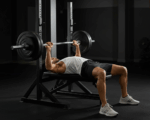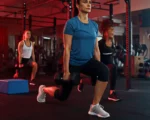If you’re serious about refining your physique or targeting specific muscle groups, you’ve likely heard about isolation exercises. But what are they exactly, and how do they differ from other forms of training? This article dives into isolation exercises, their benefits, and how to incorporate them into your fitness routine effectively.
What Are Isolation Exercises?
Isolation exercises are single-joint movements that focus on one specific muscle group at a time. Unlike compound exercises, which engage multiple joints and muscle groups (like squats or pull-ups), isolation exercises are all about precision and control. Think of moves like bicep curls, tricep extensions, or leg extensions. Each targets just one muscle group, allowing for focused engagement.
Examples of Isolation Exercises:
- Bicep curls: Targets the biceps
- Tricep extensions: Focuses on the triceps
- Hamstring curls: Strengthens the hamstrings
- Leg extensions: Works the quadriceps
- Lateral raises: Activates the shoulders (specifically the deltoids)
- Pec flys: Tones the pectorals (chest muscles)
- Calf raises: Builds calf muscles
- Crunches: Engages the abdominal muscles
What Are the Benefits of Isolation Exercises?
While compound exercises often take the spotlight for their efficiency and overall muscle-building potential, isolation exercises have unique benefits that make them an essential part of well-rounded fitness programs.
1. Targeted Muscle Development
For those with specific physique goals, isolation exercises are an invaluable tool. They allow you to work a particular muscle group until failure, which can lead to focused hypertrophy (muscle growth). For example, if you’re looking to increase your bicep size, performing high-rep bicep curls will directly stimulate that muscle more effectively than a compound movement like a row, which engages multiple muscles.
2. Lower Risk of Injury
Because isolation exercises target just one muscle group, you’ll often be lifting lighter weights compared to compound exercises. This reduced load leads to less strain on your joints, making isolation exercises a safer option for those recovering from an injury or looking to avoid overloading their bodies.
3. Mind-to-Muscle Connection
Have you heard bodybuilders talk about the “mind-to-muscle connection”? This concept refers to the conscious effort of mentally focusing on the contraction of the muscle being worked. Isolation exercises are ideal for building this connection, as the simplicity of the movements allows you to concentrate fully on the targeted muscle.
4. Supplementary to Compound Movements
Adding isolation exercises to your routine helps address muscle imbalances or weaknesses. For example, while squats are great for building lower body strength, incorporating leg curls can ensure that the hamstrings, not just the quads, are developing evenly.
5. Assist with Recovery
Isolation exercises are less taxing on the nervous system compared to heavy compound lifts. This makes them a great choice for active recovery days or for finishing off a workout without adding unnecessary fatigue.
How to Incorporate Isolation Exercises Into Your Routine
Although isolation exercises can be valuable, they are most effective when combined with compound movements. Here’s how to optimize their use:
Step 1: Start with Compound Exercises
Begin your workout with compound lifts (like deadlifts, squats, or bench press) when your energy levels and focus are at their peak. These exercises require more effort and engagement across multiple muscle groups, so they should be prioritized.
Step 2: Finish with Isolation Exercises
Once you’ve completed your compound lifts, move on to isolation exercises. This transition allows you to hone in on specific muscle groups that may not have been fully worked during your compound lifts. For example:
- After a bench press, add pec flys to isolate the chest muscles.
- Following a pull-up session, incorporate bicep curls to further focus on the arms.
Step 3: Use Isolation for Weak Areas
Identify muscle groups that need extra attention and use isolation movements to bring them up to speed. For instance, if your rear shoulders (posterior delts) are lagging, add rear delt flys to your training routine.
Step 4: Moderate Volume
For most individuals, incorporating 2-5 isolation movements after 1-3 compound lifts is an effective balance to hit various muscle groups without overextending your workout.
Common Myths About Isolation Exercises
Myth 1: Can You Build Muscle with Just Isolation Exercises?
While isolation movements are effective for targeting specific muscles, they aren’t as time-efficient as compound lifts. For overall muscle growth, compound exercises create an optimal environment by engaging multiple muscle groups, increasing heart rate, and eliciting beneficial hormonal responses. A combination of the two is ideal.
Myth 2: Are Isolation Exercises Necessary?
Not necessarily. If your goal is general fitness or improving overall strength, compound exercises alone can suffice. However, for bodybuilders or anyone looking to fine-tune their physique, isolation exercises are a valuable addition.
Myth 3: Do Isolation Exercises Build More Muscle?
Studies suggest that compound exercises are equally effective for hypertrophy as a program combining compound and isolation movements. Nevertheless, isolation exercises shine when hypertrophy for a specific muscle group is the goal.
Isolation Exercises vs. Compound Exercises
To maximize your training, it’s important to understand the distinction between isolation and compound exercises:
- Compound Exercises: Boost overall functionality, strength, and efficiency. Examples include squats, deadlifts, and bench presses.
- Isolation Exercises: Enhance muscle definition, correct imbalances, and improve specific areas.
Both have their place in a well-rounded fitness program, so don’t think of it as isolation versus compound, but rather isolation with compound.
Final Word
Whether you’re looking to sculpt a specific part of your body, overcome imbalances, or refine your muscle-building strategy, isolation exercises can be invaluable. Their ability to target specific muscles, reduce injury risks, and encourage mind-to-muscle connection makes them a great complement to compound lifts.
For fitness enthusiasts and bodybuilders alike, balancing both isolation and compound exercises will create a more efficient, effective training program. Start incorporating isolation exercises into your routine and enjoy the benefits of a more focused approach to fitness. Happy lifting!








